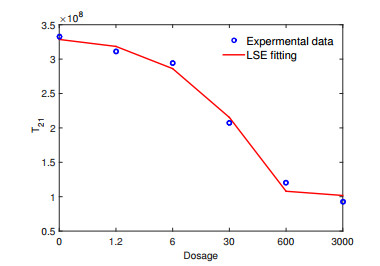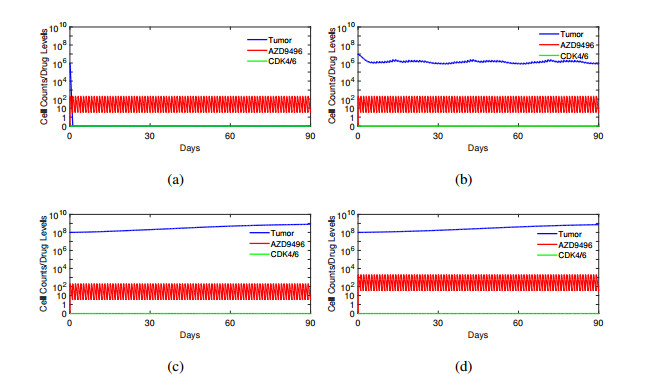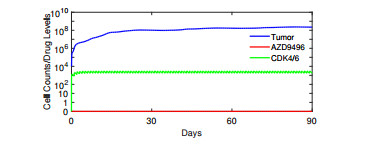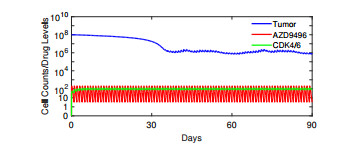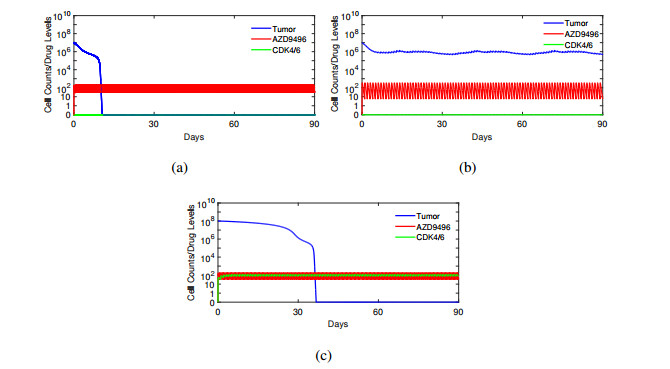Objective
There is no valid and reliable instrument that evaluates health beliefs related to home hemodialysis of patients. This study aimed to develop the Beliefs about Home Hemodialysis Scale (BHHS) and evaluate its psychometric properties in a sample of patients on in-center hemodialysis.
Methods
This methodological study was carried out with 102 patients on in-center hemodialysis. Data were collected by a questionnaire, the Perceived Social Support from Family Scale, and the BHHS. The analysis of data was carried out using descriptive statistics, Mann-Whitney U test, Pearson's correlation coefficients, and psychometric tests.
Results
The overall content validity index of the scale was satisfactory with 1.00 for relevance and 0.97 for clarity. The exploratory factor analysis yielded a four-factor structure (perceived benefits, perceived barriers toward the environment, perceived barriers toward the procedure, and perceived barriers toward socioeconomic support) accounting for 64.5% of the total variance. The BHHS had acceptable internal consistency (Cronbach's alpha coefficient = 0.69–0.91), test-retest reliability (intraclass correlation coefficient = 0.88–0.95), concurrent validity with the Perceived Social Support from Family Scale scores and known group validity with wanting to start home hemodialysis.
Conclusions
The initial psychometric testing of the BHHS is favorable. The BHHS is a valid and reliable instrument for assessing the perceived benefits and barriers to home hemodialysis in patients on in-center hemodialysis. The results of this study will gain a better understanding of the beliefs about home hemodialysis of patients and will lead to more effective intervention strategies.
1.
Introduction
Breast cancer is the second most commonly diagnosed cancer in women worldwide. Approximately 75% of breast cancers are estrogen receptor positive (ER+) [1]. Estrogen receptors are activated by estradiol binding leading to tumor growth. Standard treatment for ER+ breast cancer involves the use of endocrine therapy after surgery or chemotherapy [2,3] to reduce the risk of breast cancer relapse and lead to prolonged life. There are two types of Endocrine therapy for breast cancer including drugs that lower estrogen levels and drugs that block ERs on breast cancer cells. The aromatase inhibitors (AIs) inhibit estrogen biosynthesis leading to reduction of estradiol (E2) levels. The selective ER modulators (SERMs) block ERs and reduce ER activity. The best known SERM is tamoxifen which binds to the ER and modulates its function leading to reduction of tumor cell division rate and slows tumor growth. Tamoxifen has been proven to be effective but most patients eventually develop resistance resulting in tumor recurrence [2,3,4,5,6]. It has been reported that tamoxifen may switch the mode of action from antagonism to agonism promoting turmor growth [7].
Fulvastrant is the first selective ER degrader (SERD), a pure antagonist which blocks and damages ERs, approved by FDA in 2002 [8]. It has been shown that fulvastrant has higher affinity for ERs than tamoxifen [3] and has been proven to be effective in patients with ER+ breast cancer after progression on other endocrine therapies such as tamoxifen or AIs [4,9]. The maximum feasible dose for fulvestrant is 500 mg given by monthly intramuscular injections [7,10,11]. However, fulvestrant gives low bioavailability and a long period of time (3-6 months) to reach steady state plasma concentration [5,10]. These disadvantages of fulvestrant result in limitations in its clinical benefit. Therefore, there has been a compelling clinical need to develop oral SERDs to overcome these limitations [4,9].
AZD9496 is a new oral SERD and is a potent antagonist and degrader of ERs with high oral bioavailability, rapid absorption [5,9,10]. Cyclin-dependent kinase 4 and 6 (CDK4/6) inhibitors in combination with endocrine therapy have shown increased progression-free survival in ER+ breast cancer compared with endocrine therapy alone [5,12,13]. Experimental study by Weir et al [5] has shown that AZD9496 gives greater tumor growth inhibition compared with fulvestrant. Further study has shown tumor regression in combination therapy using AZD9496 and CDK4/6 [5].
A mathematical model of tumor growth in MCF-7 breast cancer cell line with interaction among the cancer cells and immune cells has been developed by Wei [14]. The model was based on several experimental results using MCF-7 breast cancer cells. Multistability which resembles the 3 E's of cancer immunoediting (elimination, equilibrium, and escape) was observed in the mathematical model. In this study, treatment terms are to be incorporated into the mathematical model for the study of outcome of treatment using combination therapy with AZD9496 and CDK4/6. To provide details, the mathematical model is presented in Section 2. Numerical simulations and discussion are given in Section 3. Finally, a brief conclusion is made in Section 4.
2.
Mathematical model
2.1. Formulation of AZD9496 dynamics
A first-in-human study of AZD9496 has reported a mean terminal half-life (t1/2) of 1.4 to 5.7 hours and a rapid absorption with a median tmax, the time to reach the peak plasma concentration, of 1.33-3.00 hours [9, 10]. Let U in mg be the amount of AZD9496 in the body but has not entered the circulation, Z in mg the amount of AZD9496 in the circulation, α7 the absorption rate constant, and β7 the elimination rate constant. The dynamics of AZD9496 are described by the following equations:
The value for β7 is determined by ln2/t1/2. If t1/2=3.5, then β7=ln2/(3.5/24)=4.7541. The value for α7 is obtained by solving Eqs. (2.1) and (2.2) followed by setting Z′(tmax)=0 to find α7. This gives α7=24.3659.
2.2. Formulation of palbociclib dynamics
Palbociclib, which has been shown to arrest tumor growth, is a CDK4/6 inhibitor administered orally and absorbed slowly from intestine in 6-12 hours with a median tmax=5.5 ranging from 2.0 to 9.8, a terminal terminal half life of 25.9±7.5 (mean±SD) hours, and a bioavailability of 46% [15]. Let P in mg be the amount of palbociclib in the body but has not entered the circulation, Q in mg the amount of palbociclib in the circulation, α8 the absorption rate constant, and β8 the elimination rate constant. The dynamics of palbociclib are described by the following equations:
The parameter values α8=14.1512 and β8=ln2/1.08=0.64 are obtained in a similar way used in Section 2.1. Because the bioavailability of palbociclib is 46%, about half amount of the drug enters the circulation and k1=0.5 is used throughout the paper.
2.3. Mathematical model with treatment
Let α9 and α10 be the constants for tumor growth inhibition induced by palbociclib and AZD9496, respectively. The combination treatment using AZD9496 and palbociclib incorporated into the mathematical model proposed by Wei [14] is as follows:
where E(t) is a periodic function and t is in days. The variables and parameter values are summarized in Table 1. The parameter values α9 and α10 are to be determined using experimental data.
A study conducted by Weir et al. [5] used an MCF-7 xenograft model to study in vivo efficacy of AZD9496 which was administered orally once daily (QD) at several selected dosages. In this fitting process, the experimental data are the tumor volumes on day 21 after treatment. Since the mathematical model has been developed for human patients, the dosages in mg/kg are converted into those for a patient of 60 kg throughout the paper. Let xi, i=1,2,⋯,6 be the dosages of ADZ9496 in Figure 1 and yi=T(21) is the solution to Eqs. (2.5)-(2.13) with the initial condition (T(0),N(0),C(0),L(0),U(0),Z(0),P(0),Q(0))=(8.72×107,2.5×108,4.3×109,6.6×108,0,0,0,0) corresponding to the dosage xi. Experimental data have shown WBC counts of (4.3±0.8)×103 cells/μL and lymphocyte counts of (3.5±0.6)×103 cells/μL of in mice [16]. Berrington et al. [17] have reported that 7% (2-13%) and 19% (13-32%) of lymphocytes are NK cells and CTLs, repectively. Therefore, C(0)=4.3×109, N(0)=3.5×109×0.07=2.5×108 and L(0)=3.5×109×0.19=6.6×108 are used in this fitting process. The parameter value for α10 is to be determined. It has been found in this work that Eqs. (2.5)-(2.13) with parameter values given in [14] poorly fit the data set. Therefore, parameters a, c, and α10 are used as fitting parameters. The result of the fitting process gives a=0.066, c=0.00147, and α10=0.2263. Figure 1 shows the experimental data and the fitting curve.
Weir et al. [5] also conducted an experiment to study the efficacy of combination therapy using AZD9496 and palbociclib. The result has shown that a tumor with an initial volume of 0.42 cm3 (about 108 cells) reduced to that with 0.25 cm3 (about 6×107 cells) after 18 days when treated with AZD9496 at 5 mg/kg QD and palbociclib at 50 mg/kg QD. Consider that the maximum tolerated dose (MTD) of palbociclib is 125 mg. The combination doses at 300 mg QD for AZD9496 and 125 mg QD for palbociclib are selected. The parameter value α9 is determined to satisfy T(18)=6×107 by solving Eqs. (2.5)-(2.13) with T(0)=108. This results in α9=0.01003.
3.
Numerical simulation and discussion
3.1. Tumor dynamics without treatment
The system under study has a smaller intrinsic tumor growth rate, a, and a larger factor, c, of tumor growth induced by E2 than those in [14]. Recall that the system using parameter values in [14] exhibits three stable equilibria, and the immune system is able to eliminate or control a tumor smaller than 2 mm in diameter. The system under study exhibits two stable equilibria without treatment (Figure 2). They are tumor free equilibrium and large tumor equilibrium. Figures 2(a) and (b) show that the immune system is able to eliminate a tumor of 103 cells (≈ 0.2 mm in diameter) while a tumor of 104 cells (≈ 0.43 mm in diameter) grows large with time. Tumor population dynamics depend strongly on tumor cell properties and individual variations.
3.2. Tumor dynamics with monotherapy using AZD9496
Based on an MCF-7 xenograft model in mice treated with AZD9496, it was reported that a dose of 5 mg/kg is the minimum dose required for significant tumor inhibition [9]. A dose si=300 QD is selected in the simulation and the results are shown in Figures 3(a)-(c). Figures 3(a)-(c) show that the treatment with AZD9496 at a dose of 300 mg QD is able to eliminate a tumor of 106 cells (≈ 2 mm in diameter) and control a tumor of 107 cells (≈ 4 mm in diameter) but the treatment fails to control a tumor of 108 cells (≈ 9 mm in diameter). Increasing the dose si to 3000 mg QD still fails to control a tumor of 108 cells (Figure 3(d)). Experimental data [5] have shown little difference in inhibition of tumor growth between AZD9496 doses of 5 mg/kg (si=300) and 50 mg/kg (si=3000). Similar results have also been observed by [4].
3.3. Tumor dynamics with monotherapy using palbociclib
The maximum dose of palbociclib used in an experimental study by Weir et al. [5] is 50 mg/kg (vi=3000) QD, which is a high dose. Figure 4 shows that monotherapy using palbociclib is ineffective. This agrees with the results in the experimental study by Weir et al. [5].
3.4. Tumor dynamics with combination therapy
Combination therapy allows the use of lower dosages of each therapy drug to reduce toxicity and overcome resistance. It can also produce synergistic effect and enhance response. In this simulation, doses si=300 (AZD9496) QD and vi=125 (palbociclib) QD are selected. Figure 5 shows that the combination therapy can produce synergistic effect and control a tumor of 108 cells which would otherwise grow large when treated with monotherapy using AZD9496 or palbociblib alone.
3.5. Variation in treatment schedule
First-in-human studies have been conducted to determine safety and tolerability for AZD9496 [9, 10]. Patients received AZD9496 in a dose escalation design with 20 mg QD to 600 mg twice daily (BID). Although the maximum tolerated dose was not reached, Hamilton et al. [9] has recommended the 250 mg BID dose for subsequent AZD9496 study. Figure 6(a) shows that monotherapy using AZD9496 alone at 250 mg BID is able to eliminate a tumor of 107 cells. This treatment has a better outcome than that of the treatment at 500 mg QD (Figure 6(b)). Dividing a single daily dose into two smaller doses and administered twice daily can be more effective. Furthermore, Figure 6(c) shows that AZD9496 250 mg BID combined with palbociclib 125 mg QD is able to eliminated a tumor of 108 cells.
3.6. Variation in tumor cell proliferation rate
The doubling time of MCF-7 breast cancer cells ranges between 30 hours and several days [18,19]. A doubling time of 30 hours is corresponding to a=ln2/(30/24)=0.55 while that of 10 days is corresponding to a=ln2/10=0.069. There is a large variation in the intrinsic tumor growth rate a. Assume a breast cancer with a=0.2, where the doubling time is about 3.5 days. Figure 7(a) shows that combination therapy with doses si=300 (AZD9496) QD and vi=125 (palbociclib) QD is not able to control a tumor of 108 cells. Increasing the dose of AZD9496 is not effective (figure not shown). Figure 7(b) shows that increasing the dose of palbociclib to 250 mg QD is able to control a tumor of 108 cells. However, this dose is beyond the MTD of palbociclib.
4.
Conclusion
This paper, which is based on a previously developed mathematical model [14], studies a combination therapy using AZD9496 as a degrader of ERs and palbociclib as a CDK4/6 inhibitor. Treatment terms are modeled based on clinical and experimental data and information of pharmacokinetic parameters of the above drugs [5,9,10,15].
Numerical simulation shows that monotherapy using AZD9496 alone can help control a tumor with a restricted size while using palbociclib alone is ineffective. This has also been observed in the experimental study conducted by Weir [5] using an MCF-7 xenograft model in mice. A clinical trial has reported that some patients receiving AZD9496 had stable cancer [9]. Combination therapy using AZD9496 and palbociclib can generate synergistic effect and induce tumor regression for a larger tumor, which would otherwise grow large when monotherapy with either AZD9496 or palbociclib is used. This also agrees with the experimental results in [5].
A change in dosing schedule may affect the outcome of a treatment. Dividing a large single dose into two smaller doses may be more effective. Finally, an example with a larger tumor cell proliferation rate is studied. Numerical simulation shows that combination therapy can inhibit tumor growth if a lager dose, which is beyond MTD, of palbociclib is used. It is suggested that triple therapy using immunotherapy and the above two drugs may be able to treat the tumor with safety and efficacy.
Acknowledgments
This research work was supported by the Ministry of Science and Technology of Taiwan under the grant MOST107-2115-M-035-006.
Conflict of interest
The author declares no conflicts of interest in this paper.









 DownLoad:
DownLoad:
